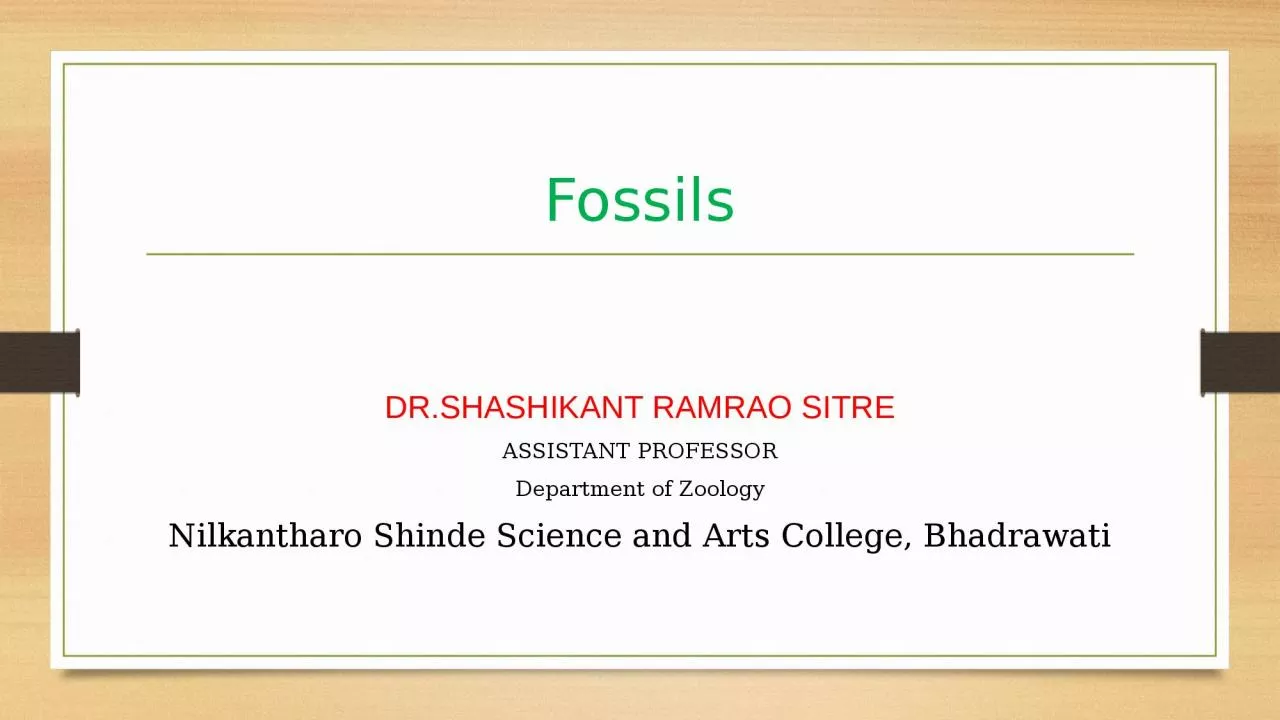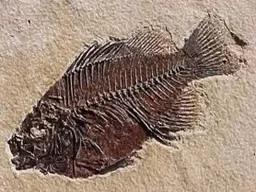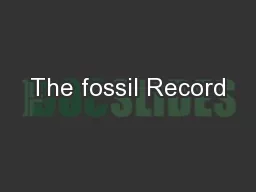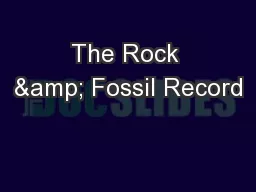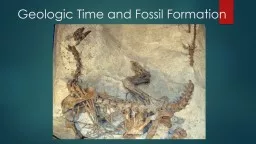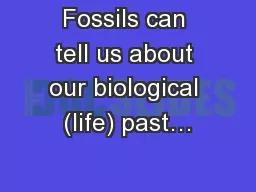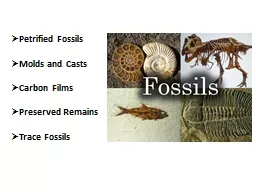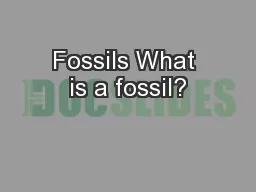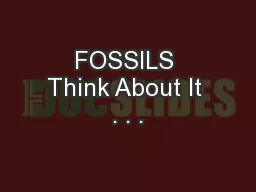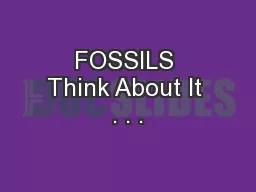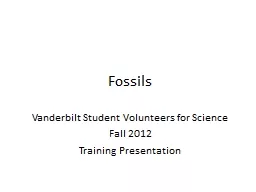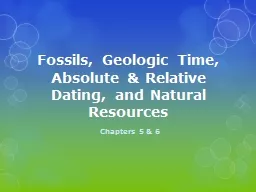PPT-Fossils DR.SHASHIKANT RAMRAO SITRE
Author : elena | Published Date : 2024-02-03
ASSISTANT PROFESSOR Department of Zoology Nilkantharo Shinde Science and Arts College Bhadrawati Fossils Sir Charles Lyell Fossil can be defined as Any body
Presentation Embed Code
Download Presentation
Download Presentation The PPT/PDF document "Fossils DR.SHASHIKANT RAMRAO SITRE" is the property of its rightful owner. Permission is granted to download and print the materials on this website for personal, non-commercial use only, and to display it on your personal computer provided you do not modify the materials and that you retain all copyright notices contained in the materials. By downloading content from our website, you accept the terms of this agreement.
Fossils DR.SHASHIKANT RAMRAO SITRE: Transcript
Download Rules Of Document
"Fossils DR.SHASHIKANT RAMRAO SITRE"The content belongs to its owner. You may download and print it for personal use, without modification, and keep all copyright notices. By downloading, you agree to these terms.
Related Documents

